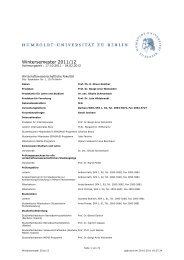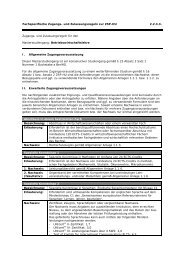Measuring the Effects of a Shock to Monetary Policy - Humboldt ...
Measuring the Effects of a Shock to Monetary Policy - Humboldt ...
Measuring the Effects of a Shock to Monetary Policy - Humboldt ...
Create successful ePaper yourself
Turn your PDF publications into a flip-book with our unique Google optimized e-Paper software.
Bayesian FAVARs with Agnostic Identification 5<br />
sampling seems <strong>to</strong> be unfavorable.<br />
The aim <strong>of</strong> this paper is threefold. First I critically examine <strong>the</strong> result by BBE and<br />
provide an answer why <strong>the</strong>y arrive at inferior results and how one should apply this pro-<br />
cedure <strong>to</strong> receive more reasonable results. I like <strong>to</strong> combine <strong>the</strong> Bayesian FAVARs with<br />
<strong>the</strong> agnostic identification by Uhlig (2005). To my best knowledge this has not been done<br />
yet in <strong>the</strong> current literature on empirical macroeconomics. Hence I tackle <strong>the</strong> question<br />
raised above in a complete consistent Bayesian framework. Not only <strong>the</strong> fac<strong>to</strong>rs and <strong>the</strong><br />
parameters <strong>of</strong> interest are estimated with Bayesian methods, more importantly I apply<br />
<strong>the</strong> agnostic identification in order <strong>to</strong> identify <strong>the</strong> specific effects induced by contrac-<br />
tionary monetary policy. Here I try <strong>to</strong> be as precise as possible and as close as possible<br />
<strong>to</strong> <strong>the</strong> conventional wisdom. This is accomplished by setting different ”block criteria”<br />
that successively become stricter, while imposing more restrictions. This approach holds<br />
an enticing promise in that one can narrow down <strong>the</strong> space <strong>of</strong> economically reasonable<br />
dynamic reactions as accurate as <strong>the</strong> data allows. We do not have <strong>to</strong> set restrictions on<br />
only one price variable, one <strong>of</strong> <strong>the</strong> monetary aggregates and one short term interest rate<br />
as it has been applied so far and is common practice when applying sign-restrictions in<br />
<strong>the</strong> VAR framework. Having available such a large datasets, provides <strong>the</strong> possibility <strong>to</strong><br />
be more strict in imposing e.g. not only <strong>the</strong> CPI <strong>to</strong> react non-positively after a monetary<br />
policy shock but also o<strong>the</strong>r price variables that are incorporated in <strong>the</strong> estimation proce-<br />
dure. This serves <strong>the</strong> possibility <strong>to</strong> identify <strong>the</strong> structurally, reaction <strong>of</strong> <strong>the</strong> economy in<br />
an more exact manner than o<strong>the</strong>r identification approaches common in <strong>the</strong> literature on<br />
empirical macroeconomics.<br />
The second contribution and also <strong>the</strong> most time consuming one was <strong>to</strong> provide a Mat-<br />
lab code that does <strong>the</strong> estimation and identification. Here <strong>the</strong> major challenge has been<br />
<strong>to</strong> provide a code that is as efficient as possible, especially with respect <strong>to</strong> <strong>the</strong> calculating<br />
time and <strong>the</strong> memory required in a way that also students can run <strong>the</strong> program on PCs <strong>of</strong><br />
”common” capacity without waiting a week for <strong>the</strong> results. The Gibbs sampling procedure


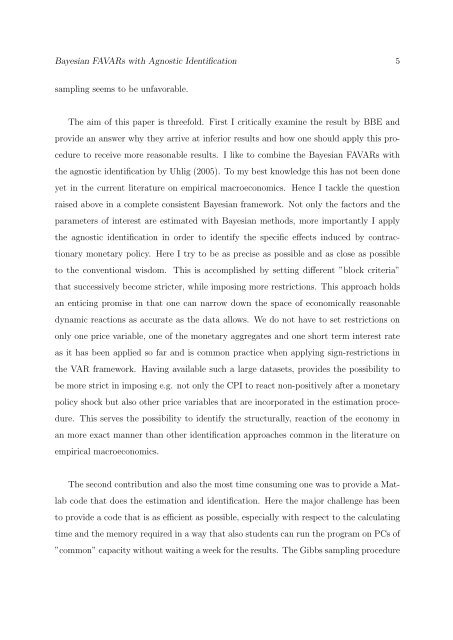
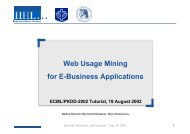
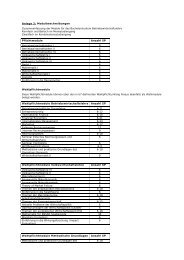

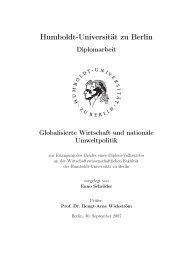
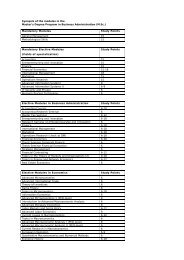
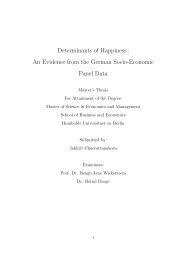
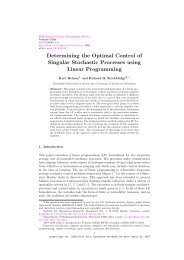
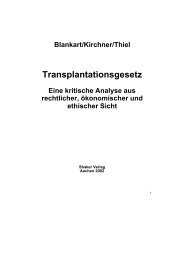
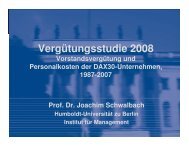

![[Text eingeben] [Text eingeben] Lebenslauf Anna-Maria Schneider](https://img.yumpu.com/16300391/1/184x260/text-eingeben-text-eingeben-lebenslauf-anna-maria-schneider.jpg?quality=85)

